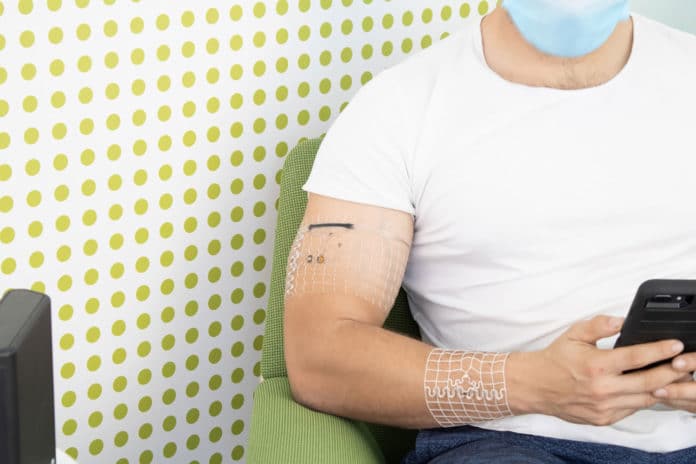Wearable technology is one of the fastest-advancing sectors of the broader technology industry, now outpacing the development of smartphones. From basic fitness trackers to virtual and augmented reality headsets, wearables are everywhere.
Engineers at the University of Arizona have introduced a new concept of tailoring a device directly to a person and using wireless power, wireless power casting to allow the device to operate 24/7 without ever needing to recharge.
Engineers 3D printed a wireless wearable that doesn’t need to charge. This new device is known as a symbiotic device, which offers several benefits.
The wearables are based on body scans of wearers and can operate continuously using a combination of wireless power transfer and compact energy storage.
Engineers used 3D scans of a wearer’s body to 3D print custom-fitted devices that wrap around various body parts. The ability to specialize in sensor placement allows engineers to measure physiological parameters they otherwise couldn’t.
Tucker Stuart, a doctoral student in biomedical engineering and the first author on the paper, said, “If you want something close to core body temperature continuously, for example, you’d want to place the sensor in the armpit. Or, if you want to measure how your bicep deforms during exercise, we can place a sensor in the devices to accomplish that. Because of the way we fabricate the device and attach it to the body, we’re able to use it to gather data a traditional, wrist-mounted wearable device wouldn’t be able to collect.”
As the new wearables are custom fitted to the wearer, they’re also highly sensitive. Scientists tested the device’s ability to monitor parameters including temperature and strain while a person jumped, walked on a treadmill, and used a rowing machine.
In the rowing machine test, subjects wore multiple devices, tracking exercise intensity and how muscles deformed with fine detail. The devices were accurate enough to detect body temperature changes induced by walking up a single flight of stairs.
The device also doesn’t use any adhesive. It receives its power from a wireless system with a range of several meters.
The device also includes a small energy storage unit to function even if the wearer goes out of the system’s range, including out of the house.
Philipp Gutruf, assistant professor of biomedical engineering and Craig M. Berge Faculty Fellow in the College of Engineering, said, “These devices are designed to require no interaction with the wearer. It’s as simple as putting the device on. Then you forget about it, and it does its job.”
Journal Reference:
- Tucker Stuart et al., Biosymbiotic, personalized, and digitally manufactured wireless devices for indefinite collection of high-fidelity biosignals, Science Advances (2021). DOI: 10.1126/sciadv.abj3269
